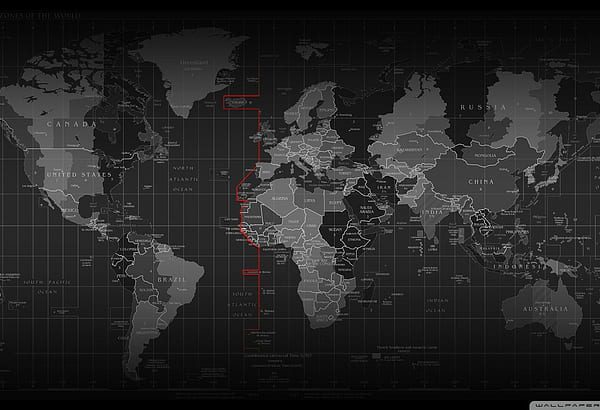Data observability plays a crucial role in the development of Software-as-a-Service (SaaS) products. SaaS companies rely heavily on data to deliver value to their customers, make informed decisions, and continuously improve their offerings. Let’s explore the impact of data observability on SaaS product development.
- Enhancing Product Quality: Data observability helps ensure the quality of the product by monitoring and assessing the data generated and processed within the SaaS application. By implementing robust data quality monitoring practices, SaaS companies can identify and rectify data issues, such as inaccuracies, incompleteness, or inconsistencies. This leads to a higher quality product, better user experience, and increased customer satisfaction.
- Real-time Insights and Iterative Improvements: Data observability provides real-time insights into how customers are using the SaaS product. By closely monitoring user behavior, feature adoption, and performance metrics, SaaS companies can gain valuable feedback and identify areas for improvement. These insights enable iterative development, allowing product teams to make data-driven decisions and prioritize enhancements or fixes based on observed user patterns and needs.
- Efficient Bug Detection and Troubleshooting: SaaS products are complex systems with numerous components and dependencies. Data observability enables continuous monitoring of these components, detecting anomalies or errors in real-time. By closely observing data pipelines, system logs, and performance metrics, SaaS companies can quickly identify and resolve bugs, ensuring smooth operation of the product. This leads to reduced downtime, improved customer experience, and increased operational efficiency.
- Scalability and Performance Optimization: SaaS products often experience rapid growth and increasing user demands. Data observability helps in monitoring the scalability and performance of the product infrastructure. By closely observing resource utilization, system bottlenecks, and response times, SaaS companies can identify scalability issues and optimize their infrastructure accordingly. This allows them to handle increased user loads, minimize latency, and deliver a reliable and performant product.
- Personalization and User Engagement: Data observability enables SaaS companies to collect and analyze user data to drive personalization and improve user engagement. By observing user interactions, preferences, and usage patterns, SaaS companies can tailor the product experience to individual users or customer segments. This results in a more personalized and engaging user experience, leading to higher customer retention and satisfaction.
- Compliance and Security: Data observability is crucial for ensuring compliance with regulations and maintaining data security in SaaS products. By closely monitoring data access, encryption, and storage practices, SaaS companies can identify and address any security vulnerabilities or compliance gaps. This helps protect user data, build trust with customers, and mitigate potential legal and reputational risks.
Let’s focus in here for a minute.
Compliance and security are critical considerations for SaaS products, and data observability plays a vital role in ensuring adherence to regulations and maintaining data security. Here are some examples of how data observability impacts compliance and security in SaaS product development:
- Compliance Monitoring: SaaS companies must comply with various regulations, such as GDPR (General Data Protection Regulation) or HIPAA (Health Insurance Portability and Accountability Act), depending on the industry they operate in. Data observability allows companies to monitor data handling practices, access controls, and data retention policies to ensure compliance. For instance, by closely observing data access logs and conducting regular audits, SaaS companies can identify any unauthorized access attempts or unusual data handling activities that may violate compliance requirements.
- Security Incident Detection: Data observability helps in identifying security incidents or breaches promptly. By monitoring system logs, network traffic, and user access patterns, SaaS companies can detect anomalous behavior or suspicious activities that may indicate a security breach. For example, if a user account shows abnormal login patterns or access privileges, data observability can trigger alerts to notify security teams to investigate and mitigate potential threats swiftly.
- Threat Detection and Prevention: With data observability, SaaS companies can proactively monitor for potential threats and vulnerabilities. By observing system logs, intrusion detection systems, and threat intelligence feeds, companies can identify patterns that indicate possible cyberattacks, malware infections, or other security risks. This allows them to take immediate action, such as implementing additional security measures, patching vulnerabilities, or updating access controls, to prevent data breaches and protect user information.
- Data Encryption and Privacy: Data observability helps ensure the proper implementation of data encryption and privacy measures. SaaS companies can closely monitor data flows, data-at-rest, and data-in-transit to verify that sensitive information is adequately protected. For instance, data observability can track encryption protocols, validate SSL/TLS certificates, and detect any misconfigurations or vulnerabilities that may compromise data privacy. This ensures that user data remains secure and confidential within the SaaS product.
- Auditing and Reporting: Data observability provides a comprehensive view of data activities within the SaaS product, enabling companies to generate audit logs and reports. These logs can be used for compliance audits, internal reviews, or to demonstrate regulatory adherence to clients and stakeholders. By monitoring and capturing relevant data events, SaaS companies can maintain an auditable trail of data activities, enhancing transparency and accountability.
- Incident Response and Recovery: In the event of a security incident or data breach, data observability aids in incident response and recovery efforts. By closely monitoring system logs, network traffic, and data access, SaaS companies can quickly identify the scope and impact of the incident. This information helps in containing the breach, implementing necessary security patches, and initiating data recovery procedures to minimize the damage and restore the system’s integrity.
In summary, data observability has a profound impact on SaaS product development. By closely monitoring data quality, user behavior, system performance, and security, SaaS companies can deliver higher quality products, improve user experience, optimize performance, and ensure compliance. Embracing data observability practices empowers SaaS companies to make data-driven decisions, iterate quickly, and build successful and scalable products.




